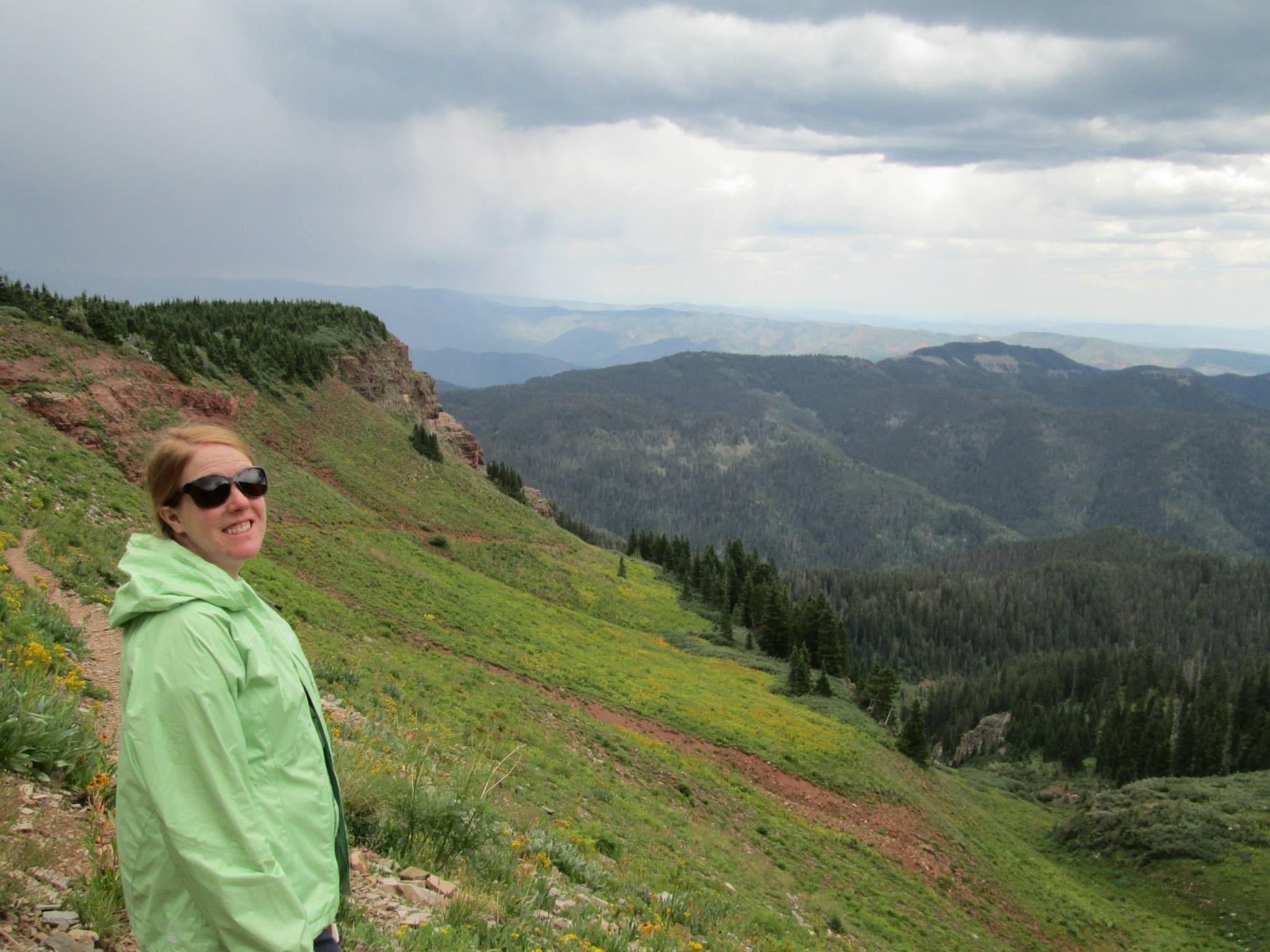Interview with a WEco Board Member
By Cody Williams
We spoke with Laura Spann, program coordinator for the Southwestern Water Conservation District (SWCD), which was created by the Colorado General Assembly to protect, conserve, use, and develop the water resources in the southwestern corner of the state. Laura oversees the district’s financial assistance program and Water Information Program, serves as an alternate for the district on the Water Congress State Affairs Committee, and monitors state water policy. She serves on Water Education Colorado’s board of directors, where she has represented southwestern Colorado for the past year. Laura is also tackling the job of being a parent to an almost one-year-old son, a new and exciting realm in her life. We asked Laura a few questions about SWCD, its overall influence on public and tribal lands, the programs SWCD is coordinating, and her relationship with Water Education Colorado (WEco).

How does the Southwestern Water Conservation District interact with public lands, tribal lands and federal agencies?
Like much of the state, a majority of southwestern Colorado’s lands are
public or tribal. In fact, Colorado’s largest wilderness area—the
Weminuche—is located in the San Juan Mountains. SWCD values its
relationships with federal partners in managing local watersheds for
public and private use. Over its 77-year history, the district has been
involved with many collaborative stakeholder processes addressing water
management on public lands. One such effort recently resulted in the
successful passage of the Hermosa Creek Watershed Act.The state’s only two reservations are located in southwestern Colorado.
The Southern Ute Indian Tribe and the Ute Mountain Ute Tribe are
integral to the water equation in this region. Some people may not realize
that Colorado is one of the only western states that has settled its tribal
water right claims. In this area, tribal, local, state, and federal
stakeholders all worked together to meet the tribal water rights
obligations with the construction of the Animas-La Plata and Dolores
Projects. This was also a victory for Colorado, and we take a lot of pride
in that.
Which programs or services from SWCD’s Water Information Program (WIP) are you most enthusiastic for this year?
Thanks to more than 20 local partners, the Water Information Program
has provided consistent educational programming in our area for 24
years. Our new Program Manager Elaine Chick brings her energy to the
projects as we restructure the website, waterinfo.org, to make it more
accessible and user-friendly. The most rewarding educational program we
have down here is the Annual Children’s Water Festival, sponsored by
SWCD and coordinated by the Water Information Program. Nearly eight
hundred fifth graders from around the region attend. They hear short
presentations from agricultural users, federal water managers, and
environmental organizations—and play in the water a bit!
What will be the primary goals or key discussion points of this year’s Annual Water Seminar in southwestern Colorado, coming up on April 6?
This year’s presentations will tie to preparation, mitigation and recovery
from water emergencies. In the context of natural disasters nationwide
and, looking at a dry year, we thought this would be a timely topic. We’re
looking at everything from wildfires and water supply to how public
outreach plays a role after emergencies. Join us on Friday, April 6 in
Durango.
What makes southwestern Colorado unique and sets it apart from the rest of the state, and do public lands, tribal lands and water issues play a role in that?
One unique thing about southwestern Colorado we try to highlight is
[that] there are actually nine finger-like basins that flow into New Mexico
and Utah. It is a big district and each basin has their own unique situation
and context. Processes like the roundtable–bringing stakeholders from
each of those nine basins together to discuss our area–is really important
into seeing the broader vision for southwestern Colorado.
Why do you serve on the Water Education Colorado Board?
It’s humbling to serve with so many experienced and thoughtful members of the water community on the board with an energetic staff that envisions water awareness as the priority in Colorado. Personally, I have been a consumer of Water Education Colorado materials since I was a teenager. The organization made a complex topic accessible to people like me and was partly why I’ve chosen a career in water. And that’s a true story! I want to be a part of impacting others like me.
What sort of newfound knowledge or noticeable features have you garnered since working with Water Education Colorado?
How does a dedicated staff of five have such a significant footprint across
the state through WEco’s programming and content? The content
development process is well-sourced, thorough, balanced, and yet
produces Headwaters articles that are accessible to professionals and
newbies. WEco is lean and effective!
What has been the most rewarding experience or project you have had the opportunity to work on (with either Water Education Colorado or SWCD)?
SWCD is a regional water policy hub, so working here I’ve had pleasure
of developing relationships with diverse stakeholders from Nucla to
Pagosa, and Silverton to Towaoc. With all the doom and gloom of climate
crisis, drought, and compact curtailment, our many committed, passionate
local experts give me hope that southwestern Colorado, and the state as a
whole, will come together to meet the challenges before us.
What is the biggest goal you will be faced with in 2018 (professional or personal)?
I want to do more than just keep my head above water—I want to swim gracefully with my additional responsibilities at SWCD, and as a new parent. Wish me luck!


 Print
Print
Reblogged this on Coyote Gulch.